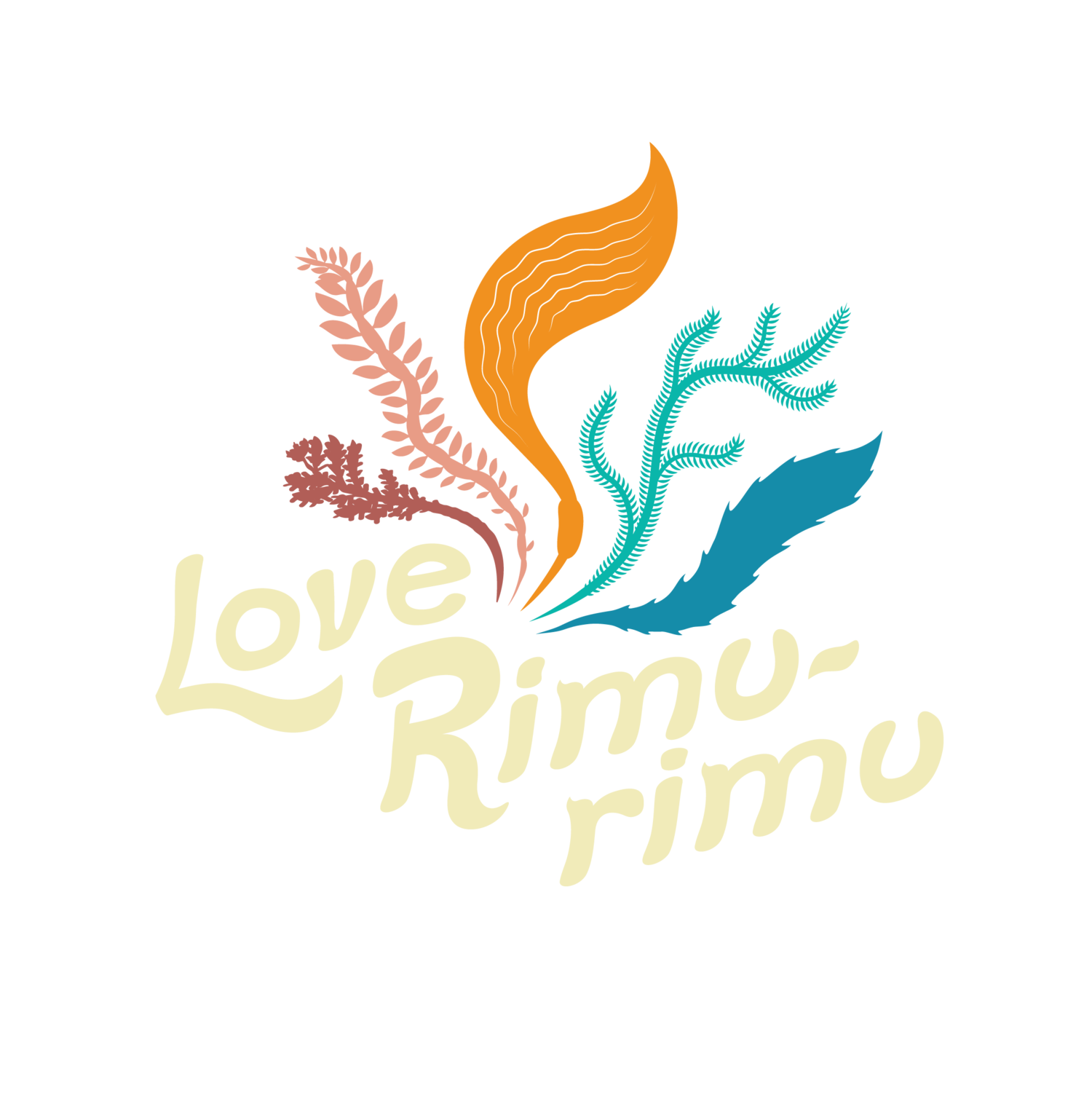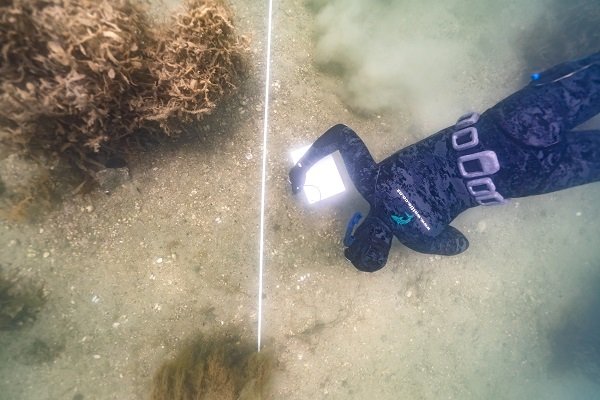From 2cm to 2m – Love Rimurimu is growing!
The last six months have seen some incredible success, as well as some helpful learning – and 2023 will be the year we start our first full-scale kelp forest in Te Whanganui-a-Tara.
Since we planted our first baby seaweeds at our pilot site at Mahanga Bay, some have grown from just two centimetres long to two metres long, a total of 92 metres growth in six months!
We’ve lost a few plants, and we’ve also trialled some green gravel (rocks inoculated with seaweeds) but wave movements meant this has been less successful than growth on ropes – but we continue to learn about what we need to have in place to succeed.
There are a range of collaborations building with other regions who are working on regeneration in their own areas. The team at NIWA – Dr Roberta D’Archino and Dr Neill Barr, and our aquaculturist are trialling a range of different substrates – from wool to sponge and some created from lattices of cornstarch and other biodegradable materials.
Data logging instruments have gone into the marine environment in a range of locations – monitoring temperature, sediment and light – all crucial factors in seaweed survival and growth rates, and useful for the selection of sites coming up.
VIDEO: The Love Rimurimu monitoring team had some fishy friends at the Mahanga Bay pilot site in November - pipefish.
But the other key part of the puzzle is understanding what has been lost, and where seaweeds once thrived. Past data is limited so students supervised by Victoria University of Wellington and Taranaki Whānui are collecting mātauranga and community knowledge about what was once in the area. People can contribute their knowledge and observations through a short online survey, or ask to have one of the team call them back.
Back at the lab we’re scaling up our aquaculture capabilities, and NIWA research into various species and the extraction and storage of their spores continues – including how we can keep spores viable long-term.
This would help ensure a better diversity, and also give protection from the impact of higher temperatures, such as the marine heatwaves being experienced around New Zealand. This is a real threat to giant kelp, Macrocystis pyrifera continuing to thrive in Wellington.
The work being done at NIWA on building a ‘spore bank’ and research at the Victoria University Coastal Ecology Lab into marine heatwaves and other stressors will also help inform the project moving forward.
The other key part of the project is people. The Love Rimurimu team has been working with schools and community to help share these beautiful underwater forests. Work with mana whenua partners Taranaki Whānui is helping to develop a much richer understanding of connections and their moemoea (aspirations) for replenishing the mauri of the harbour to a thriving ecosystem once more.
This is a long-term journey. Multiple stressors from rivers and into the wider catchment have degraded the harbour over time, in particular sediment, water quality, warming waters and other ecosystem imbalances created through the loss of other species.
But we’re working on it. The next six months will be busy:
Community snorkels taking place across Wellington will be a way for everyone to experience these magic forests. At these events, people will be able to share their stories and recollections about the harbour and coasts of Te Whanganui-a-Tara.
By early April, the information gathered from mana whenua, science and community will lead to the final site selection for Winter 2023 plant-outs. These sites will be based on what’s important to the local community, what kinds of methods can be used, and where survival is most likely.
People remain at the heart of the project – the harbour sustains our community, and its health directly impacts our own. By bringing community into the experience of being in an underwater world, or by enlisting their help in monitoring and caring for regeneration sites, we hope they’ll come to think of their little bit of seaweed forest, in the same way they care for the forests on land.
Alongside the work, we’ve been documenting and sharing our endeavours and hope to turn this into a helpful toolkit for others. We’re also working with Freedive Aotearoa to develop a framework for free-diving monitoring methods that can be used by the community.
We’ve also been invited by the Kelp Forest Alliance to make a pledge as part of the global target for seaweed regeneration as the UN Decade of the Ocean at the International Seaweed Symposium in Tasmania in February – and this winter begins our first steps toward this.









